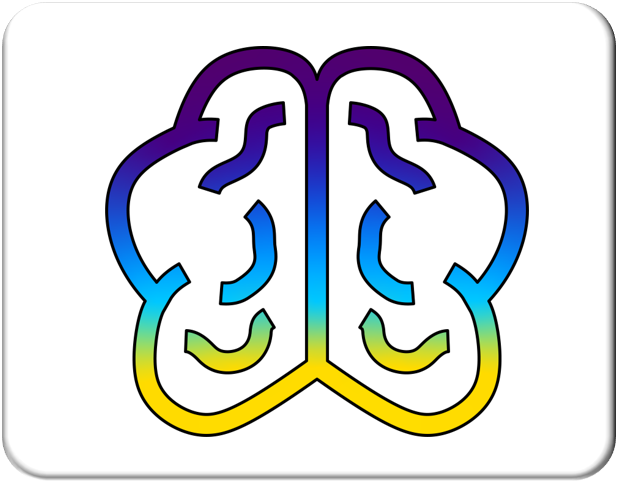Our exploration of oppression continues...
Institutions (The Disciplinary Domain)
Not only do we have hierarchies based on belief systems, but we also have literal hierarchies in the way our institutions work. For example, in many schools there’s a ‘head teacher’ and then a ‘deputy head teacher’ and then there’s the ‘head of year’ and ‘head of department’ followed by the rest of the teaching staff.
There’s a hierarchy, and almost every institution (from hospitals, to police stations, to the government), has hierarchies just like this. And while these just seem like a ‘chain of command,’ they are also used to manage systems of oppression, which queer philosopher Michel Foucault argues functions to train people into being more obedient (Discipline and Punish, pg.170).
Patricia Hill Collins calls this ‘The Disciplinary Domain of Oppression,’ which she defines as ‘a way of ruling that relies on bureaucratic hierarchies and techniques of surveillance’ (Black Feminist Thought, pg. 280).
There are four key areas to this form of ruling: policies, surveillance, ranking and punishment.
Policies
Policies are like rules that each company has to follow. Usually when you engage with a company, you have to follow their policies as well.
Policies are often set up to seem like a way to make things safe and fair, but sometimes they can (intentionally or accidentally) contribute to oppression. For example, a policy that says that a school uniform means ‘boys wear trousers and girls wear skirts’ is inadvertently oppressive to trans students who may want to wear a different uniform than for the gender they were assigned at birth.
Or a policy that says ‘workers must have professional hair styles’ may be used to deem traditional African or Caribbean hairstyles as ‘unprofessional’ and thus be a way to discriminate against Black people with dreadlocks, for example.
Surveillance
This doesn’t just mean security guards and cameras; we actually all tend to watch one another and may tell someone off if they’re not following the rules.
Negatively commenting on someone’s outfit may be a way of telling a queer person not to express their queer identity in the workplace, or questioning whether or not a disabled person is suitable for a particular task may be used to limit their opportunities.
Ranking
Perhaps there is no better version of this than getting graded in school. By knowing if your grades are great, average or poor, you get a sense of where you rank among your peers.
This can also happen in workplaces, such as who makes the most sales or who gets to be ‘employee of the month.’ This kind of ranking ignores things like the barriers a student might have from doing their homework if their family can’t afford a computer, or the difficulty a worker might have in selling products because customers are uncomfortable with them being in a wheelchair.
Punishment
Those who do not comply with this system are punished. Maybe they get in trouble at school, maybe they get fired from their job. However they are punished, the punishment is designed to not only harm the oppressed individual, but to motivate everyone else to be as unlike that individual as possible.
According to Patricia Hill Collins, in order to resist the oppression of the disciplinary domain of power we need to work from inside institutions in order to keep the institution itself under surveillance, in turn working to ‘find innovative ways to work the system so that it will become more fair’ (Black Feminist Thought, pg. 281-2).
Reviewing your company’s policies and re-writing them so they cannot be used to hurt people, hiring people from marginalised communities, or calling out surveillance practices that could contribute to oppression, are all important forms of resistance to systemic oppression.
Students can do this too, organising together to call for an end to particular policies and demanding improved inclusivity training for staff.
Networks (The Structural Domain)
No institution works alone, they are all connected in the networks that shape our society. The way institutions all work together functions to organise systems of oppression. Patricia Hill Collins calls this ‘The Structural Domain of Oppression,’ which involves the way large-scale social institutions are organized to maintain the subordination of oppressed social groups over time (Black Feminist Thought, pg. 277).
This video shows an excellent example of how institutions work together in order to organise oppression, showing how the combination of the institutions of housing, government (taxes), education, and banking all work together to ensure that white people have easier access to opportunities than Black people.
While the video is specific to America, these problems exist in the UK as well and are what Anne E. Cudd describes as ‘the fundamental injustice of social institutions’ (Analyzing Oppression, pg. 20). What we can also see from this video is that these networks of institutions are grounded in a long history and work to support false and harmful beliefs about Black people.
According to Patricia Hill Collins, resistance to these networks of institutions involves wide-scale social movements, revolutions, wars, and social reforms that result in system-wide upheaval (Black Feminist Thought, pg. 277-8). This includes protesting, rioting and large-scale social media campaigns.
This form of resistance is about saying ‘enough is enough’ and calling for a change to the entire way of doing things in order to create a more fair and equitable society. Protest demands may include things like improved funding for schools in low-income neighbourhoods, improvements in police de-escalation policies and training, investments into charities and organisations working to support marginalised communities, investing into healthcare for marginalised groups, the banning of predatory loans, and more.
So when we see riots like those at Stonewall or by Black Lives Matter, remember that this is part of a system-wide upheaval. It may be scary and messy, but it’s important for wide-scale social change.
Final Thoughts
Whether you are spending time checking your privilege and/or calling people out, educating yourself and others, reviewing and rewriting policies, or protesting in the streets – all of these are important contributions to social justice activism, and all of these are necessary in order to resist systemic oppression on every level.
During Pride month, let us remember that oppression is intersectional, and that we are all in this fight together. In our resistance, let us work together to make our society a more fair and equal place for everyone.
Sources:
Cudd, Ann E. Analyzing Oppression. Oxford University Press, 2006.
Foucault, Michel. Discipline and Punish: The Birth of the Prison. 2 ed., translated by Alan Sheridan, Vintage Books, 1995.
Haney López, Ian F. “Institutional Racism: Judicial Conduct and a New Theory of Racial Discrimination.” The Yale Law Journal, vol. 109, no. 8, 2000, pp. 1717-1884.
Hill Collins, Patricia. Black Feminist Thought: Knowledge, Consciousness, and the Politics of Empowerment. 2nd ed., Routledge, 2000.
hooks, bell. Feminist Theory: From Margin to Center. 1984. 2 ed., Pluto Press, 2000.
Warner, Michael. “Introduction.” Fear of a Queer Planet: Queer Politics and Social Theory, edited by Michael Warner. University of Minnesota Press, 1993, pp. vii-xxi.





